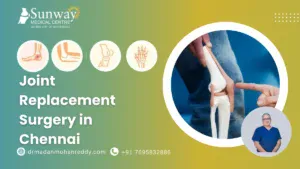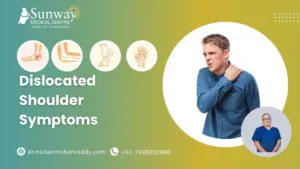If you’ve noticed blue or purple veins bulging under the skin of your legs, you’re not alone. Millions of people experience varicose veins those rope-like, twisted veins that can be seen just beneath the surface. For many, they’re just a cosmetic concern. But for others, they’re a sign that the veins in the legs are under strain and could potentially cause more serious issues.
In this post, we’ll walk you through when to worry about varicose vein symptoms, what causes them, the risks to be aware of, and the best ways to treat or even prevent them. This is the kind of friendly, informative explanation you’d get sitting down with a trusted doctor.
What Are Varicose Veins?
Varicose veins occur when the valves inside your leg veins stop working properly. Instead of blood flowing smoothly back to the heart, it can begin to pool causing the veins to stretch, twist, and swell. They most commonly appear in the lower legs because that’s where blood has to work hardest to fight gravity.
In many cases, varicose veins don’t cause discomfort. But sometimes they can ache, throb, itch, or even lead to more severe health concerns. That’s why it’s important to understand when to worry about varicose vein symptoms.
What Are the Symptoms of Varicose Veins?
Recognizing the signs early is essential. Common symptoms include:
- Swollen, bulging veins that are dark purple or blue
- Achy or heavy feeling in the legs
- Burning, throbbing, or cramping in the lower limbs
- Itching or irritation around the veins
- Skin discoloration or dryness near the affected area
- Worsening discomfort after sitting or standing for long periods
If symptoms worsen or start to interfere with daily activities, it’s a good time to consider when to worry about varicose vein issues and consult a healthcare provider.
What Causes Varicose Veins?
Several factors can lead to the development of varicose veins:
- Aging, which weakens vein walls and valves
- Hormonal changes during pregnancy or menopause
- Prolonged standing or sedentary lifestyle
- Being overweight, which adds pressure to leg veins
- Family history of vein problems
What Are the Risk Factors for Varicose Veins?
Several lifestyle and health factors increase your likelihood of developing varicose veins:
- Family history: Genetics can play a large role.
- Inactivity: Sitting or standing for long stretches restricts circulation.
- Pregnancy: Increased blood volume and hormonal changes affect veins.
- Obesity: Extra weight adds pressure to the legs.
- Aging: Vein walls and valves naturally weaken over time.
To help lower your risk, try regular leg movement, elevate your legs daily, and wear comfortable shoes and clothing that supports circulation.
What Are the Serious Complications of Varicose Veins?
While many varicose veins are harmless, some can lead to complications if left untreated:
- Leg ulcers: Especially near the ankles, caused by fluid buildup and pressure
- Superficial blood clots: Also known as thrombophlebitis, causing swelling and tenderness
- Deep vein thrombosis (DVT): A more serious condition where clots form deeper in the veins
- Bleeding: Varicose veins close to the skin surface can rupture with minor trauma
Understanding when to worry about varicose vein complications can help prevent them from worsening. If your skin starts to change color or develop sores, or if pain intensifies, don’t delay speaking to a specialist.
How Do Varicose Veins Impact Health?
Untreated varicose veins can limit your daily activities. Walking or standing may cause discomfort, and swollen legs can affect your mobility. Some people also struggle with self-consciousness due to the visible veins, leading to reduced physical activity and even social withdrawal.
Sleep may be disrupted if your legs feel heavy, restless, or painful at night. All of these are signs pointing toward when to worry about varicose vein progression.
What Are the Best Ways to Treat Varicose Veins?
There are several safe and effective options to treat varicose veins, ranging from at-home remedies to advanced procedures:
- The latest treatment for varicose veins includes minimally invasive techniques like:
- Laser ablation
- Radiofrequency therapy
- Foam sclerotherapy
- Laser ablation
These procedures are typically done in a clinic and require little downtime.
- Best treatment for varicose veins may also involve:
- Compression stockings to improve blood flow
- Exercise and weight management
- Leg elevation to reduce swelling
- Compression stockings to improve blood flow
For those interested in natural options, you might explore how to treat varicose veins with turmeric. While turmeric won’t remove varicose veins, its anti-inflammatory properties may help ease mild discomfort and support overall vein health. However, it’s best used as a supplement to medical care not a substitute.
Prevention
The good news? Many simple habits can protect your legs from worsening vein problems:
- Walk or stretch daily to boost circulation
- Avoid sitting or standing for too long without a break
- Elevate your legs when resting to ease pressure
- Maintain a healthy weight to reduce strain on your veins
- Wear compression socks if you’re at higher risk
These proactive steps can help delay or prevent when to worry about varicose vein situations before they begin.
Conclusion
Varicose veins are more than just a cosmetic issue for many people. While they often start small, they can become painful or lead to health concerns over time. Understanding when to worry about varicose vein symptoms empowers you to take action early before complications arise.Whether you’re exploring the latest treatment for varicose veins or interested in natural remedies like how to treat varicose veins with turmeric, you have options. The best treatment for varicose veins is one that matches your unique needs, lifestyle, and goals.







